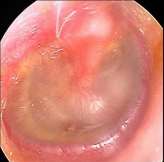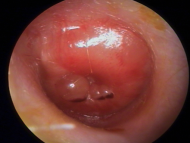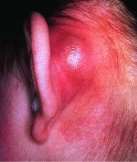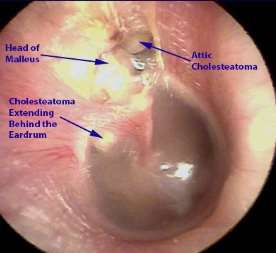Rebecca Bastow
Within the following project I’m going to analyse and consider a case of Acute Otitis Media proven in appendix one, by discussing the pathophysiology behind this situation and the way essential the position of history-taking is in addition to, the scientific presentation and the possible examination findings. To additional help my findings of the situation I’m going to together with the particular checks which can be wanted to substantiate my analysis. By means of the utilisation of acceptable proof, I’m going to justify and formulate my therapy plan and referral pathway, taking into account the moral, medico-legal and professional tasks regarding the case.
Acute otitis media (AOM) could be known as the presence of irritation within the center ear with attainable effusion, its related indicators and signs are fast in onset (Munir and Clarke, 2013, p. 27). It’s evidenced that greater than seventy-five p.c of instances generally impacts younger youngsters beneath the age of ten, notably those that are effected by passive smoking, attend nursery and are formula-fed. It’s stated to have a higher prevalence in males than females (Edwards and Stillman, 2006, p. 129 -137). Consequently, youngsters have a horizontal, much less acute angle and shorter Eustachian tube which makes it simpler for bacterial enter and harder for fluid to maneuver. Nevertheless, usually it’s collapsed however opens with swallowing and constructive stress (Nair and Peate, 2013, p. 565 -566). The recurrence of this an infection may cause critical issues resembling listening to loss, tympanic membrane perforation, sometimes it may well result in mastoiditis, facial nerve paralysis, sinus thrombosis, and meningitis (Kivi and Yu, 2016). The presentation in adults and older youngsters is often reported as earache whereas, younger youngsters they could rub and pull on their ear or might current generic signs resembling fever, continuous crying, poor feeding, cough and restlessness at night time. Indicators and signs which can be widespread in AOM encompass pink, cloudy or bulging tympanic membrane, ache, pyrexia, headache, tinnitus, nausea and vomiting, discount in listening to, malaise and otalgia (Nationwide Institute for Well being and Care Excellence, 2015).
Eustachian tube is located on the anterior wall of the center ear to the lateral wall of the nasopharynx and subsequently, anatomically connects to the throat and palatine tonsil. Thus, permitting the an infection to impact something that’s positioned within the related pathways. AOM is a typical situation that may be triggered by higher respiratory tract infections (twenty-five p.c) both through micro organism or viruses (Nair and Peate, 2015, p. 157). Generally, it’s a virus that’s accountable for the an infection and is often self-limiting. Though, different inflammatory situations can have comparable outcomes. Irritation of the nasopharynx can unfold as much as the medial finish of the Eustachian tube, forming stasis which in flip modifications the stress within the center ear, relative to ambient stress (Johnson and Hill-Smith, 2012, p. 34 -35). This stage of stasis can lead to micro organism settling within the area of the center ear through the straight pathway from the nasopharynx (Nair and Peate, 2013, p. 565 -566). The distinguished causes are reflux, blowing one thing right into a physique cavity or aspiration. The physique’s pure response to acute inflammatory responses is recognised as vasodilation, leukocyte invasion, exudation, phagocytosis and native immunological responses within the center ear (Nair and Peate, 2015, p. 157). It’s stated that viral based mostly infections that concentrate on and hurt mucosal linings of the respiratory tract might help micro organism’s means to grow to be pathogenic within the nasopharynx, Eustachian tube and the center ear cleft. Viral infections have been understood in regard to its half within the pathogenesis of AOM but, it’s nonetheless not understood what precise position they play (Waseem, M, 2016). Immunology exercise can play a significant position within the incidence of AOM and its outcomes. The nasopharynx additionally has an essential position within the improvement of AOM, its lymphoid tissues present a type of safety towards pathogens by obstructing their attachment to surfaces of the mucosa (Nationwide Institute for Well being and Care Excellence, 2015).
There are quite a few medico-legal concerns to remember in Anna’s case as a result of her solely being sixteen years of age (appendix one). The basic concern is whether or not she has psychological capability, it’s an act designed to guard those that might lack the psychological capability to make their very own choices on their care and therapy. Which applies to people aged sixteen and over (NHS Decisions, 2015). People must be given assist to decide themselves and the knowledge ought to be in a format that they’ll perceive simply. If somebody makes what’s believed to be an “unwise” choice, they shouldn’t be handled as missing capability. Remedy and care given to those that lack capability ought to be the least restrictive of their rights and freedoms (GOV UK, 2005). Psychological capability is decided by if there’s an impairment, disturbance within the operate of their thoughts or mind, because of a situation, sickness or different exterior influences. And by whether or not theses consequently make the person unable to make particular choices once they must. People might lack capability to make particular choices however have the capability to make others (High quality Care Fee, 2016). It might probably additionally fluctuate with time, they could lack capability at one cut-off date, however could possibly make the identical choice at a later level. To be deemed to have psychological capability they need to, perceive the knowledge pertinent to the choice, retain the knowledge and use the knowledge within the course of of creating that call (NHS Decisions, 2015).
The capability to consent to therapy has a controversial stance in beneath sixteen 12 months olds. Nevertheless, Gillick competence expresses that any little one beneath the age of sixteen can consent, if they’ve “adequate understanding and intelligence” to be able to making a choice when required (Ministry of Ethics, 2014). This refers back to the evaluation undertaken by docs to ascertain if a baby beneath sixteen is deemed to must capability to consent for therapy within the absence of parental or guardian consent. The routine evaluation of competence ought to be appropriate for the kid’s age (NHS Decisions, 2016). It might be argued, what’s deemed to have ‘adequate’ for understanding and intelligence. In Anna’s case this doesn’t immediately apply as a result of she is over that age nonetheless, the transferability is possible.
Kids sixteen and over are deemed to have capability by regulation and might consent or refuse therapy. If a baby sixteen or over is believed to lack capability, an evaluation of capability to consent must be carried out and documented (High quality Care Fee, 2016). As soon as legitimate consent to therapy has been attained it ought to be recorded as proof, legitimate consent is the place the medical skilled has given the kid, dad and mom or each the relevant details about the aim of therapy, in addition to dangers and attainable options (Division of Well being, 2009). It’s nonetheless good follow to offer dad and mom with data nonetheless, consent must be sought from the kid and the extent of knowledge shared ought to be deliberated (High quality Care Fee, 2016). In regard to safeguarding considerations, data could be shared with dad and mom with out consent. Choices made in one of the best curiosity for the person, concerning care and therapy could be made anybody concerned in caring for them, relations, pals, and any lawyer appointed (NHS Decisions, 2016).
As quickly as I had consent from Anna or each Anna and her dad and mom I’d take an in depth historical past from her resembling, when the ache began, ache rating, traits of the ache, whether or not it’s radiating wherever, any allergy symptoms, medical situations, present medicine and social elements (appendix one). An intensive historical past is vital because it helps set up; potential therapy plans, attainable security netting options, guidelines out pink flags or differential analysis (appendix two) that are all grounded on the findings from the bodily evaluation and particular checks (Kavanagh, S, 2015). From commentary, examination and palpation; it was recognised that her tonsils pink and swollen, her head was inclined to proper however was strolling usually, otoscopy reviled that the tympanic membrane was cloudy and bulging barely and her palatine and pre-auricle lymph nodes appeared tender (Douglas et al, 2013, p. 297 -314). The baseline observations confirmed that she had no important temperature and all others observations have been with regular parameters (appendix one). To help my analysis and exclude potential pink flags indefinitely I’d perform some particular auditory checks.
The primary kind of listening to loss is conductive; this can be a drawback conducting sound waves alongside the trail of the ear. It might probably happen wherever from the outer ear, center ear or, tympanic membrane (Munir and Clarke, 2013, p. 11). Sensorineural is the opposite kind of listening to loss, by which the trigger is located within the interior ear, the cochlea or within the vestibulocochlear nerve (cranial nerve VIII), (Munir and Clarke, 2013, p. 11).
A easy check to ascertain the extent of listening to loss is the Voice check. By observing and interesting in dialog with the affected person it’s straightforward to recognise if it is advisable elevate your voice to be heard clearly. A whisper check would assist you achieve higher notion of their listening to loss (Munir and Clarke, 2013, p. 13). A extra complicated and efficient check that’s drastically used is the Tuning fork check (Burkey et al, 1998). Inside this there’s two additional checks, the primary known as the Weber check (appendix three). That is the place the tuning fork is hit on a floor to make it vibrate, then the bottom is positioned on the center of the sufferers’ brow after which ask the affected person the place they hear this sound. It’s regular for the affected person to listen to it in each ears besides these with conductive listening to loss or unilateral sensorineural listening to loss, then it’s higher heard in a single ear (Douglas et al, 2013, p. 303). The Rinne’s check (appendix three) ought to conclude that the sound was louder beside the exterior auditory meatus than on the mastoid course of it’s because air conduction is larger than bone (Rinne’s constructive), (Munir and Clarke, 2013, p. 13). This check is carried out by inserting the vibrating fork on the mastoid course of after which the affected person experiences once they can not hear it. The fork is then positioned roughly two centimeters away from the exterior auditory meatus and requested if they’ll hear it, the affected person then experiences once they can not hear something (Douglas et al, 2013, p. 303). Nevertheless, if the affected person informs you that the sound is louder on the mastoid course of this implies bone is the higher conductor of sound (Rinne’s detrimental) and applies to conductive deafness (Munir and Clarke, 2013, p. 13). A false detrimental Rinne’s check can happen when listening to may be very poor in a single facet, when the fork is positioned on the mastoid strategy of the poor ear the sound could be carried out via the cranium and projected to the great ear (Douglas et al, 2013, p. 303).
To handle individuals with preliminary shows of AOM paracetamol or a nonsteroidal anti-inflammatory medication for example, ibuprofen is used to deal with ache and fever. It’s evidenced that each of them are efficient in relieving ache in youngsters with AOM, and have few antagonistic results when the advised doses are used (Nair and Peate, 2015, p. 157).
For almost all of individuals with AOM a non-antibiotic technique is used, that is the place they guarantee sufferers that antibiotics will not be wanted and that they make little distinction to signs. Antibiotics might also have antagonistic results and contribute to antibiotic resistance (Munir and Clarke, 2013, p. 23). A delayed antibiotic prescribing technique may be utilised, the place they advise sufferers to start antibiotics if inside 4 days their signs don’t enhance or in the event that they get considerably worse (Johnson and Hill-Smith, 2012, p. 34 -35). Fast antibiotics ought to be given to folks that have AOM and are; systemically unwell however admission shouldn’t be wanted, on the threat of issues as a result of present illnesses, these whose signs have continued for 4 or extra days and never getting higher, youngsters beneath the age of two with an infection in each ears and youngsters with discharge within the canal or tympanic perforation (Nationwide Institute for Well being and Care Excellence, 2015). A five-day course of amoxicillin is the first-line of therapy if antibiotics are required. Whereas, individuals which can be allergic to penicillin have erythromycin or clarithromycin as options (Munir and Clarke, 2013, p. 23). Amoxicillin is proven to be more practical than erythromycin or clarithromycin towards the possible pathogens concerned in AOM (Nationwide Institute for Well being and Care Excellence, 2015).
A Cochrane systematic overview confirmed that was no respectable proof for the routine use of antibiotics within the therapy of AOM in youngsters (Venekamp et al, 2013). Though antibiotics confirmed to have a statistically important lower of kids experiencing ache with AOM between day two and 7 in contrast the placebo, eighty-two p.c of the kids’s signs spontaneously improved. It was concluded that the advantages and potential harms of antibiotic therapy should be evaluated, taking into consideration antagonistic results and the potential for resistance (Venekamp et al, 2013). Nevertheless, the proof uncovered that they have been the best towards youngsters beneath two with bilateral AOM, or with each discharge and AOM no matter age. For almost all of kids with gentle AOM, an observational technique appears acceptable (Venekamp et al, 2013). One other systematic overview of the therapy of AOM in youngsters discovered that in contrast with quick course antibiotics, lengthy programs lowered short-term therapy failure, however had no benefits in the long run as compared with quick programs (Kozyrskyj et al, 2015).
Consequently, to handle and deal with Anna’s AOM I’d deal with her ache with paracetamol or ibuprofen taking into account of any allergy symptoms and her bronchial asthma.
I’d set up if she has taken ibuprofen earlier than and whether or not there have been any issues. The proof above reveals this situation to be self-limiting and that antibiotics don’t have any important impact on this situation.
It’s proven that the general public have essentially the most contact with the NHS through basic practices, NHS England estimated that roughly a million individuals entry their basic follow every day (Comptroller and Auditor Common, 2015). The variety of direct and phone contact with sufferers grew (15.four p.c) all through all scientific workers generally practices between 2010 and 2015. Throughout that interval, the typical affected person checklist expanded by ten p.c (Baird et al. 2016). It’s evident that the non-emergency companies like these are being sought by these with situations that aren’t critical or life threatening. NHS Direct acquired roughly four.four million calls in 2011 and 2012, 2.7 million calls have been made between 2012 and 2013 to NHS 111 and in 2007 and 2008, round eight.6 million calls have been acquired by the GP out-of-hours companies (Nationwide Institute for Well being and Care Excellence. 2014).
In Anna’s case of AOM it’s evident that she is asymptomatic, the unfold of an infection has clearly tracked down from the nasopharynx, Eustachian tube, throat, tonsils to the palatine and pre-auricle lymph nodes. It immediately corresponds with the bodily evaluation and the preliminary historical past of the situations presentation subsequently, ruling out a differential analysis. The no antibiotic framework above is evidently efficient, I’ve concluded that an analgesic (paracetamol) or nonsteroidal anti-inflammatory (ibuprofen) method can be tailored and suggested to handle Anna’s ache. This additionally demonstrates the significance of historical past taking as Anna has solely had these signs for 2 days, indicating that this therapy is essentially the most acceptable. It’s obvious that Anna doesn’t require hospitalisation so I would want to go away her with the suitable security netting in place. Thus, if she was at house or in school when the incident occurred and her dad and mom or trainer have been current and content material with monitoring her, I would depart the identical recommendation as proven above. I’d additionally recommendation Anna to go and see her GP if her signs worsen or persist for 4 or extra days. It’s documented that basic practices are well-versed within the administration of those non-urgent situations in the event that they develop or worsen. Equally, it’s proof that the general public are conscious of which service to pursue in the event that they expertise any comparable acute situations. These actions would solely be taken as soon as the pink flags have been dominated out via the checks and assessments carried out above. In abstract acute otitis media is often a self-limiting situation that resolves by itself with out the enter of antibiotics subsequently, it’s doubtless that Anna won’t want any additional involvement kind every other healthcare skilled.
References
(2017). Differential Prognosis. Obtainable: https://on-line.epocrates.com/illnesses/3935/Otitis-media/Differential-Prognosis. Final accessed 25-01-17.
Baird, B., Charles. A., Honeyman. M., Maguire, D. and Das, P. (2016). Understanding pressures generally follow. Obtainable: https://www.kingsfund.org.uk/sites/files/kf/field/field_publication_file/Understanding-GP-pressures-Kings-Fund-May-2016.pdf. Last accessed 25-01-17.
Burkey, J, Lippy, W, Schuring, A and Rizer, F. (1998). Scientific Utility of the 512-Hz Rinne Tuning Fork Take a look at. Obtainable: https://www.mm3admin.co.za/paperwork/docmanager/6e64f7e1-715e-4fd6-8315-424683839664/00023361.pdf. Final accessed 17-01-17.
Comptroller and Auditor Common. (2015). Division of Well being and NHS England: Stocktake of entry to basic follow in England. Obtainable: https://www.cqc.org.uk/websites/default/information/20151008%20Transient%20information%20-%20Capability%20and%20consent%20in%20beneath%2018s%20FINAL.pdf. Final accessed 27-01-17.
Division of Well being. (2009). Reference information to consent. Obtainable: https://www.gov.uk/authorities/uploads/system/uploads/attachment_data/file/138296/dh_103653__1_.pdf. Final accessed 23-01-17.
Douglas, G., Nicol, F and Robertson, C (2013). Macleod’s Scientific Examination. 13th ed. Edinburgh: Elvsevier. P. 297 -308.
Edwards, C and Stillman, P (2006). Minor Sickness or Main Illness? The scientific pharmacist locally. 4th ed. London: Pharmaceutical Press. p. 129 -137.
GOV UK. (2005). Psychological Capability Act 2005. Obtainable: https://www.dissertationapp.com/write-my-essay/laws.gov.uk/ukpga/2005/9/pdfs/ukpga_20050009_en.pdf. Final accessed 28-01-17.
Johnson, G and Hill-Smith, I (2012). The Minor Sickness Guide. 4th ed. London: Radcliffe Publishing Ltd. p. 25 -41.
Kavanagh, S. (2015). Historical past Taking. Obtainable: http://affected person.information/physician/history-taking. Final accessed 28-01-17.
Kivi, R and Yu, W. (2016). Acute Otitis Media. Obtainable: https://www.dissertationapp.com/write-my-essay/healthline.com/well being/ear-infection-acute. Final accessed 19-01-17.
Kozyrskyj, A., Klassen, T., Moffatt, M and Harvey, Ok. (2015). Quick-course antibiotics for acute otitis media. Obtainable: http://onlinelibrary.wiley.com/doi/10.1002/14651858.CD001095.pub2/full. Final accessed 29-01-17.
Ministry of Ethics. (2014). Widespread Legislation: Gillick V West Norfolk AND Wisbech Space Well being Authority 1984-5. Obtainable: https://www.dissertationapp.com/write-my-essay/ministryofethics.co.uk/index.php?p=7&q=2. Final accessed 20-01-17.
Munir, N and Clarke, R (2013). Ear, Nostril and Throat at a Look. Oxford: Wiley Blackwell Publishing Ltd. p. 22 -27.
Nair, M and Peate, I (2013). Fundermentals of Utilized Pathophysiology: An important information for nursing and healthcare college students. 2nd ed. Oxford: Wiley Blackwell. p. 565 -566.
Nair, M and Peate, I (2015). Pathophysiology for Nurses at a Look. Oxford: Wiley Blackwell Publishing Ltd. p.155 -157.
Nationwide Institute for Well being and Care Excellence. (2014). NATIONAL INSTITUTE FOR HEALTH AND CARE EXCELLENCE SCOPE: Service supply and organisation for acute medical emergencies. Obtainable: https://www.good.org.uk/steering/gid-cgwave0734/assets/acute-medical-emergencies-in-adults-and-young-people-service-guidance-final-scope2. Final accessed 18-01-17.
Nationwide Institute for Well being and Care Excellence. (2015). Otitis media – acute: Situation: Acute otitis media – preliminary presentation. Obtainable: https://cks.good.org.uk/otitis-media-acute#!situation. Final accessed 20-01-17.
Nationwide Institute for Well being and Care Excellence. (2015). Otitis media – acute – Abstract. Obtainable: https://cks.good.org.uk/otitis-media-acute#!topicsummary. Final accessed 20-01-17.
NHS Decisions. (2015). What’s the Psychological Capability Act? . Obtainable: https://www.dissertationapp.com/write-my-essay/nhs.uk/Conditions/social-care-and-support-guide/Pages/mental-capacity.aspx. Last accessed 30-01-17.
NHS Decisions. (2016). Consent to therapy – Kids and younger individuals . Obtainable: https://www.dissertationapp.com/write-my-essay/nhs.uk/Circumstances/Consent-to-treatment/Pages/Kids-under-16.aspx. Final accessed 21-01-17.
High quality Care Fee. (2016). Transient information: capability and competence in beneath 18s. Obtainable: https://www.cqc.org.uk/websites/default/information/20151008%20Transient%20information%20-%20Capability%20and%20consent%20in%20beneath%2018s%20FINAL.pdf. Final accessed 20-01-17.
Venekamp, RP., Sanders, S., Glasziou, PP., Del Mar, CB and Rovers, MM. (2013). Antibiotics for acute otitis media in youngsters (Assessment). Obtainable: http://onlinelibrary.wiley.com/doi/10.1002/14651858.CD000219.pub3/pdf. Final accessed 18-01-17.
Waseem, M. (2016). Acute Otitis: Pathophysiology. Obtainable: http://emedicine.medscape.com/article/994656-overview. Final accessed 25-01-17.
Appendix 1
Affected person: 16-year-old lady referred to as Anna
PC: Ache in proper ear
HPC: Anna has had ache in her throat and proper ear for the final two days and describes feeling “beneath the climate”.
SOCRATES- Website– Ache in throat and proper ear.
Onset– final 2 days.
Character- sharp ache in ear throat feels “scratchy”.
Radiation– some radiation down in the direction of neck.
Related signs– No systemic indicators. Ear feels “full” and affected person describes issue listening to.
Timing– fixed.
Exacerbating/Relieving factors- none.
Severity- four/10
PMH: Gentle bronchial asthma, introduced on by exertion. Anna had quite a lot of ear infections when she was youthful however hasn’t had any for a minimum of two years.
DH: Salbutamol PRN
Allergy symptoms: Elastoplast- Contact dermatitis
Alcohol/Smoking: Anna experiences consuming sometimes together with her pals however doesn’t smoke.
Occ H: Scholar
SH: Lives at house together with her dad and mom and youthful brother (12).
O/E:
OBS: T: 37.2C, P: 85 reg, RR: 12, BP: 110/75, SpO2: 98% room air
Strolling usually, with head inclined to the correct.
Examination of the exterior ear is regular; palatine and pre-auricle lymph nodes tender; tonsils pink and swollen; tympanic membrane cloudy and bulging barely.
In analyse and consider the case by discussing the pathophysiology of the situation and the way this pertains to the history-taking, scientific presentation and sure examination findings, together with any particular checks which may be required to diagnose the situation. You need to then formulate a therapy plan and referral choice justified by vital evaluation, taking the moral, medico-legal and professional tasks of the case under consideration.
Appendix 2
Differential Prognosis of Otitis media
(2017). Differential Prognosis. Obtainable: https://on-line.epocrates.com/illnesses/3935/Otitis-media/Differential-Prognosis. Final accessed 25-01-17.
Appendix three
Particular Auditory Assessments
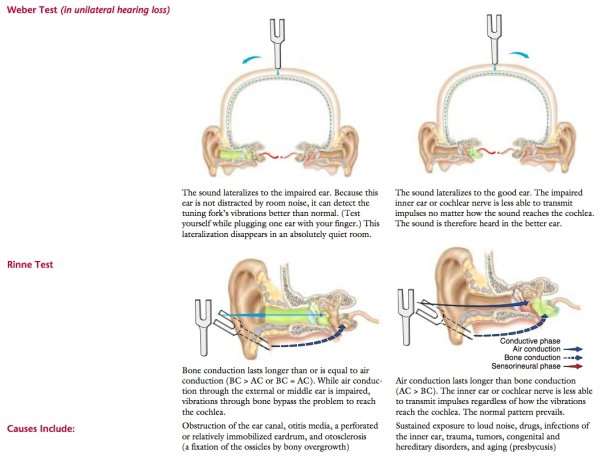
(2015). Rinne-Weber. Obtainable: http://wikige.wikia.com/wiki/Rinne-Weber. Final accessed 25-01-17.
